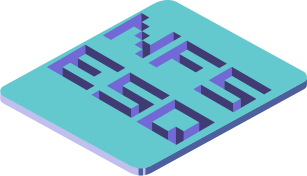Whiplash Injuries – Medical Terminology
Individuals who suffer whiplash injuries are often confronted with loads of new medical terms. Below are the definitions to some common medical terms that you may run across if you have suffered a whiplash injury.
Annulus Fibrosus – The tough outer layer of a disc.
Arthroplasty -A complex surgical operation in which a joint or disc is replaced with an artificial device.
Bone Spur (AKA Osteophyte) – A bony projection that forms over time.
Cervical – The top seven (7) vertebrae in the spine are called the cervical vertebrae and they are labeled C1 through C7 from top to bottom.
CT Scan – Shorthand for Computed Tomography. A type of 360 degrees x-ray used to see structures within the body.
Degenerative Disc Disease (AKA DDD) – Damage to a disc.
Disc – (AKA Disk, Intervertebral Disc) Soft, disc-shaped structured located between each vertebra. The disc is made of a tough outer layer called the annulus fibrosis, and a jelly-like inner layer called the Nucleus pulposus. Discs are the shock absorbers of the spine.
Disc Bulge – When a disc becomes worn out or injured it can bulge out and press on nearby structures.
Disc Herniation (AKA Disc Extrusion) – When a disc is badly injured or worn out, the jelly-like interior can squirt out and press on nearby structures, including the spinal cord.
Discogram – A medical procedure designed to diagnose which portion of the spine is causing pain. The procedure involves injecting a small amount of liquid into a disc that is believed to be the pain generator with the goal of reproducing extreme pain.
Epidural Steroid Injection (AKA Epidural Injection) – A medical procedure designed to temporarily reduce the pain associated with in injured back. Usually a combination of steroid and anesthetic is injected into the back to relieve pain and reduce inflammation.
Facet Joint – The interlocking joint of the back (posterior) portion of two adjacent vertebrae.
Fracture – A break in a bone.
Fusion Surgery – A complex surgical procedure in which two (or more) adjacent vertebrae are fused together using bone implants and metal plates and screws.
Hypertrophy – Medical term meaning increase in the volume of an organ.
Intervertebral Foramen – See Neural Formanen.
Lumbar – The bottom five vertebrae in the spine are called the lumbar vertebrae and they are labeled L1 through L5 from top to bottom.
MRI – Shorthand for Magnetic Resonance Imaging. A type of medical imaging in which magnets are used to view structures inside the body.
Neural – Medical term meaning relating to a nerve, nerve cells, or the nervous system, including the spinal cord.
Neural Foramen (AKA Intervertebral Foramen) – Openings between vertebrae through which nerves leave the Spinal Cord and extend to other parts of the body.
Neural Foraminal Stenosis (AKA Foraminal Stenosis) – A narrowing of the hole between vertebrae through which nerves extend from the spinal cord to different parts of the body.
Nucleous Pulposus – The jelly-like inner portion of a disc.
Osteophyte – Bony projections that occur along joints.
Physical Therapy – A branch of medicine involving exercises designed to reduce pain, build strength, and increase mobility and range of motion.
Spinal Stenosis – Either a narrowing of the spinal cord, which can cause pressure on the cord, or a narrowing of the holes though which nerves leave the cord.
Stenosis – Medical term for narrowing of a passageway.
Traction – A set of mechanisms for straightening broken bones or relieving pressure on the Spine or Spinal System.
Soft Tissue – Structures of the body other than bones, such as muscles and connective tissues.
Spinal Column – The part of the skeleton that bakes up a human’s “back.” Consists of interlocking vertebrae seperated by Discs.
Spondylosis – General medical term for damage to discs and related structures.
Spondylolisthesis – A medical condition in which adjascent vertebrae are displaced, and sitting unaligned with one another.
Spine – See Spinal Column.
Spinal Cord – A long, thin, tube-like bundle of nerve cells that extends downward from the brain, and is protected by the Spinal Column.
Thoracic – The middle twelve (12) vertebrae in the spine are called the thoracic vertebrae and they are labeled T1 through T12 from top to bottom.
Vertebra – A vertebra is one of the individual interlocking bones that forms the spinal column.
Whiplash – A term to describe both the movement of the body, and resulting injuries that can occur to the human body, spinal column, discs, and surrounding structures when a human body is subject to violent forces, such as in an auto accident.
What to Do if You Think You May Have Suffered a Whiplash Injury
If you think that you may have a whiplash injury, it is important to consult your doctor right away. In addition, if you suffered whiplash as a result of a car crash, you should consult a personal injury attorney. Often times insurance companies will attempt to contact you within a day or two after a car crash and settle your claim for a small amount of money. This can be dangerous if you have a serious spinal injury. Contacting a good personal injury attorney can help you protect your rights and ensure that you receive full and fair compensation for any injuries you suffered.
This article was written by Sacramento Personal Injury Lawyer Noah Schwinghamer. This article should not be considered medical or legal advice. Contact a doctor or attorney for advice pertaining to your individual case.
